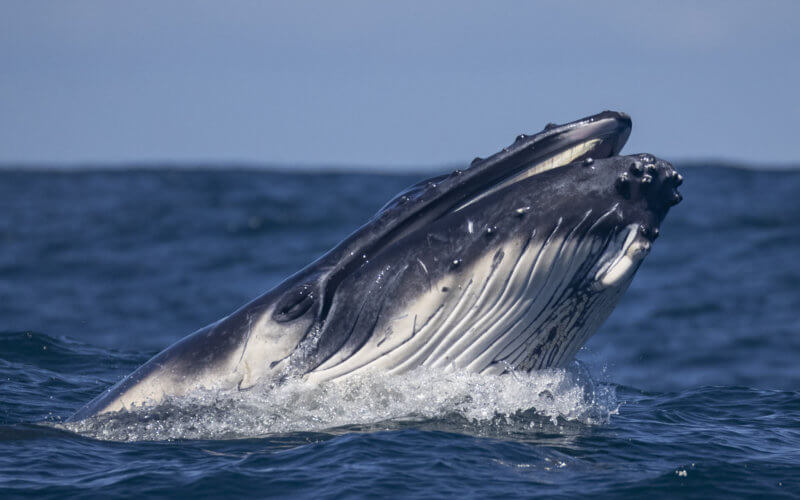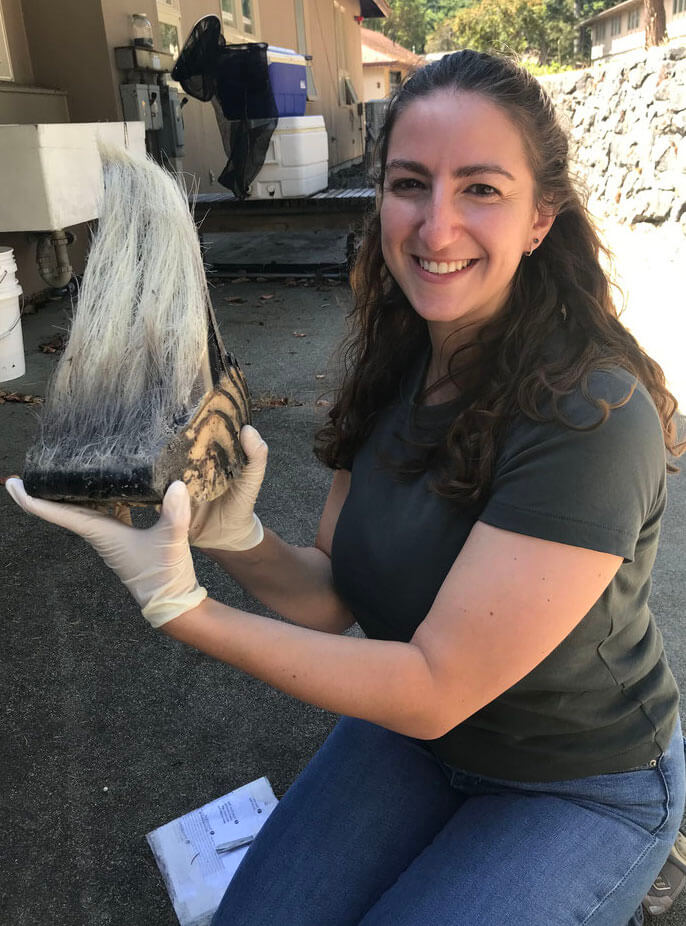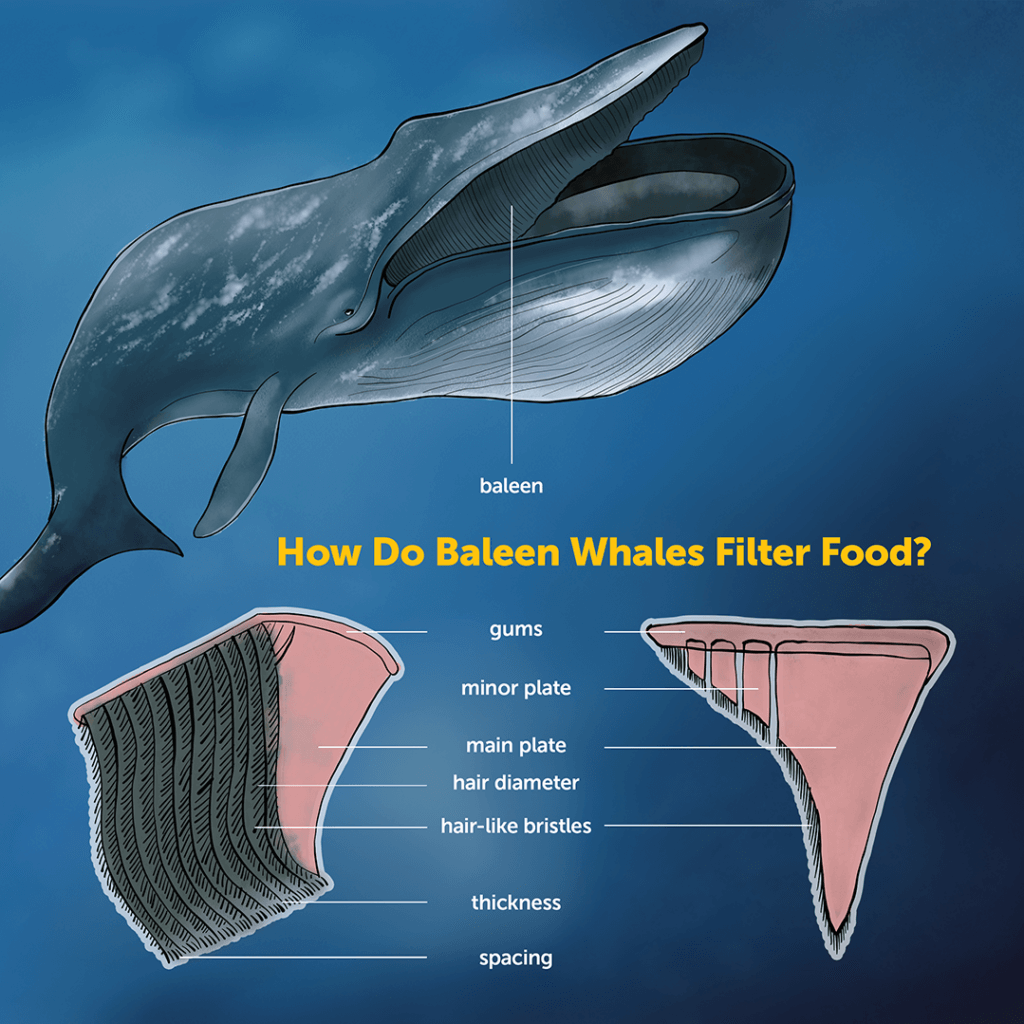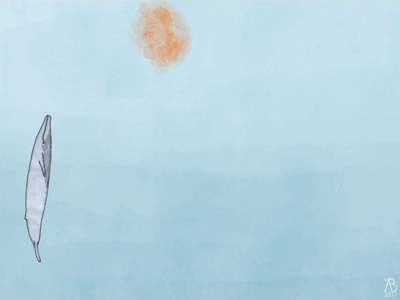
How do giant, toothless baleen whales filter thousands of pounds of tiny shrimp after gulping seawater?
Cal State Fullerton postdoctoral scholar Shirel Kahane-Rapport is diving into the biomechanics of these filter-feeders and how they use baleen plates to filter food, such as zooplankton and small fish, from seawater. The answers could lead to better engineered industrial filtration systems.
Kahane-Rapport is conducting her study under the mentorship of Misty Paig-Tran, associate professor of biological science. Paig-Tran’s FABB (Functional Anatomy, Biomechanics and Biomaterials) Lab uses a blend of anatomy and engineering techniques to answer biological questions about performance in marine animals.
“Baleen whales are fascinating. But it’s amazing how little we know about some of the biggest and most charismatic animals on the planet,” Paig-Tran said. “Studying how large animals filter tiny organisms gives us great insight into building better and more efficient filters for human use.”

Lead researcher Kahane-Rapport is conducting the study in collaboration with researchers at Stanford University, where she earned her doctorate in June 2021, and the University of Washington.
Their research aims to define how body size affects the biomechanics and the anatomical structures involved in water flow and prey capture of five species of rorquals, a family of baleen whales. This particular family of whales consists of the blue whale (the largest of all whales and the largest animal of all time), fin whale, humpback whale, gray whale and minke whale.
In early July, Kahane-Rapport presented her research at the Society of Experimental Biology international conference in Montpellier, France. In August, she’ll present at the Society of Marine Mammalogy conference in Palm Beach, Florida.
She recently was awarded a National Science Foundation Postdoctoral Research Fellowship in Biology to continue her research at CSUF for the next two years. Her research also includes working with Paig-Tran on the biomechanics of other large filter-feeding animals like manta rays.
Filter-Feeding Whales

Baleen whales have a keratinous oral tissue — the same protein as a human’s fingernail and hair — that hangs down from the roof of the whale’s mouth in bilaterally symmetrical racks, Kahane-Rapport explained. The larger keratin plates are positioned near the lip and the smaller plates are closer to the tongue. When the whale gulps huge amounts of seawater, the hair-like baleen strains, or filters, the food from the water.
“The edges of the baleen plate fray into hairs, or fringes, that interlock, creating a dense mat. This mat allows the enormous amount of water engulfed to flow out of the mouth and expanded throat, and retains captured prey,” added Kahane-Rapport, whose doctoral studies focused on large filter-feeding whales. “We don’t understand the mechanics of this process.”
Her study, which has been submitted for publication in a peer-reviewed scientific journal, examined different features of the baleen, such as the thickness, length and size of the keratin plates, and the spaces between each plate.
“We found that these features we measured were very different between the species. This is something you might expect because they are different species, but our study shows this with statistical evidence,” she said.

For the researchers, one of the more complicated aspects of studying baleen whale filtration is understanding how water passes through the filter.
“When studying a filter, you first calculate the size of the hole — known as the pore — that water passes through. Then you can determine the volume and speed of the water flow through the filter,” she relayed.
“In the case of baleen whales, the filter is a tangled mat of bristles that emerge from the baleen plates. This mat has no clear pattern, structure or pore, so researchers have not been able to calculate the volume and speed of this filter.”
Improving Man-Made Filters
For their study, the researchers generated CT scans of the bristle mat. Using specialized CT software and an equation more often used by industrial filter engineers, they were then able to calculate all the small gaps that appear between the bristles and add those up to create an approximate cumulative pore size.
“We found that the bigger whales — the blue whales and fin whales — had smaller pore sizes than the smaller whales, like the humpback whales,” Kahane-Rapport said. “As a result, our research could lead to the design of a filter that can be used to improve current man-made filtration systems, inspired by the efficiently filtered, massive amounts of water processed by these giant species.”
This study also provides scientists with a greater understanding of the feeding mechanisms of these ecologically important animals. Additionally, their work addresses the risks whales face from human-caused threats, such as pollutants in the water, including microplastics.
“Baleen whales are ecologically important animals, and by understanding them better, we can improve not only ocean life, but also human life.”